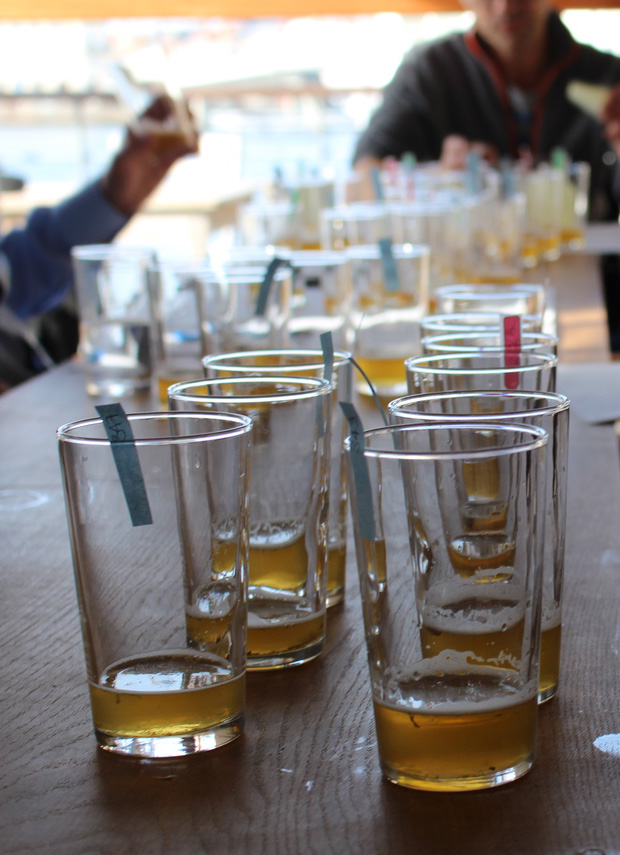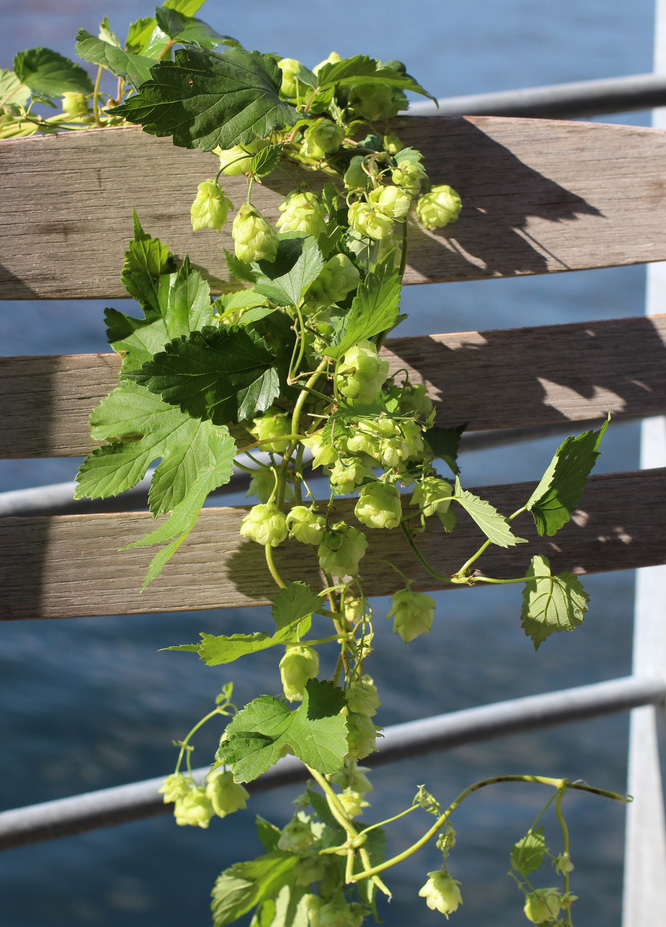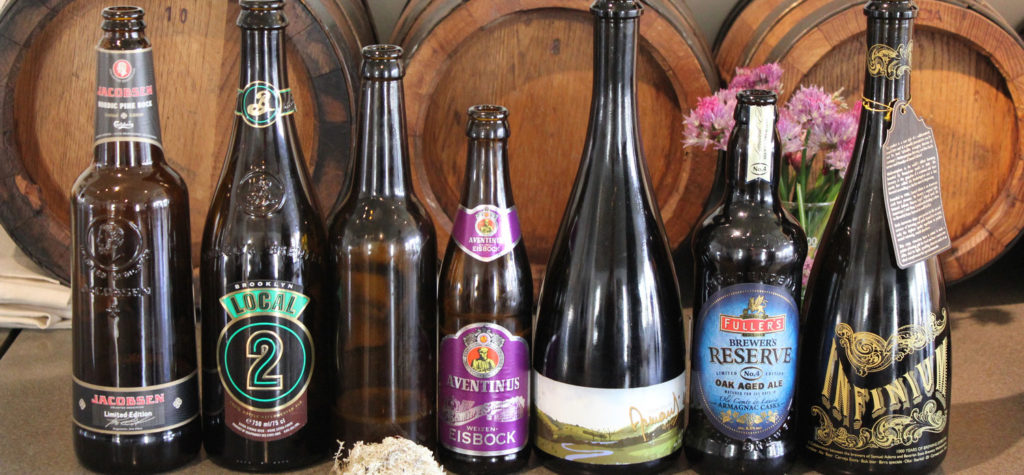by Avery McGuire
Over the last decade Nordic cuisine has been evolving rapidly. Many chefs have turned to the landscape for inspiration, rediscovering the diversity of wild and forgotten foods and using them to create distinct expressions of time and place. Yet while the food on the plate is a clear indication of the season and region, the drink in the glass often reflects distant terroirs and far-off cultures. Why is there this growing contrast between the cultural and geographical characteristics of food and drink, especially in the restaurant setting? We dove into the books and conducted interviews with sommeliers from around the Nordic region to try to answer this question.
Wet and dry
Due to differences in geographical climate, already in the 16th century there was a clear division between the food and beverage cultures of Northern and Southern Europe. Milk, meat, butter, and beer characterized the cold climate and forested landscape of the north, while the warmer south was known for its bread, olive oil, and wine (Montinari 2006). The foodways of these regions were built around the ingredients available, hence the strong geographic correlation with the consumption of different beverages. Yet this contrast in drinking habits is not based on climate and geography alone. Drinks are classified in terms of their social meanings; no alcoholic drink is ‘socially neutral’: every drink is loaded with symbolic meaning and every drink conveys a message about its consumer, the occasion, and the location (SIRC 1998). Cultural practices around both wine and beer, and their emergent associations with social status, have reinforced the contrast between wine and beer drinking cultures.
Mack P. Holt characterizes this cultural division into ‘wet’ and ‘dry’ drinking cultures. In Southern Europe where a ‘wet’ drinking culture persists, “drinking is a part of daily life and alcohol is consumed with meals on a regular basis as a form of sociability as well as a vital element to commensality.” (Holt 2006). Meanwhile, in the ‘dry’ drinking culture of Northern Europe, “drinking alcohol is perceived as something less connected with meal time and more associated with drinking in taverns, pubs, or beer halls.” (Holt 2006) In other words, the general and perhaps misguided understanding was that ‘wining’ was for ‘dining’, while ‘beering’ was for ‘cheering’. Despite the many different circumstances in which beer is celebrated and bears cultural and social significance in Scandinavia, the overwhelming association of beer with informal occasions has also diluted its perceived significance and value. We are not trying to suggest that beer was never important – it has carried great cultural significance for centuries; rather, it has not been specifically valued as part of restaurant culture in Scandinavia, especially in the last half-century, to the same extent as wine.
The status of beer is and has been at a disadvantage for decades, which perhaps stems from the drink’s complex history. Looking back to the medieval times weak and low proof beer was consumed frequently by both children and adults, and for good reason. The purification of water that happens during the brewing process killed off numerous harmful bacteria therefore preventing many water-borne illnesses. Beer was the safe way to quench one’s thirst. Individual families, for their own consumption, brewed weaker beer, while stronger beers were brewed for festivals and celebratory occasions. It may have partly been this necessity to drink beer for hydration that limited the image of the Nordic beer-drinking culture. Yet beer has a much richer cultural heritage than this element of the past suggests; it has significant value in Scandinavian society, which can and should be restored.

Roles of alcohol in society
In almost every society consuming alcohol is a social act; it does not take place ‘just anywhere’, and most cultures have designated environments for communal drinking. Subsequently one’s choice of beverage becomes a significant indicator of one’s status, serving as a declaration of membership to a particular group, generation, class, sub culture, or nation (SIRC 1998).
In the wine-drinking cultures of the south, wine is seen on a sliding scale. There are the inexpensive table wines, cultural icons present on every table. While this wine is not necessarily highly regarded for its taste, it plays an important role in the cultural understanding of eating and drinking as a communal act. Many dining experiences, especially when dining out, deserve a wine of a higher caliber; these wines are often more complex, and crafted with precision and care. It is largely these highly appreciated wines that have lead to the perceived superiority of wine in general. The northern beer culture, however, has the potential to achieve this same gradation, from everyday beers to greatly appreciated craft brews appropriate for fine dining, and in fact, elements of this already exist.
As Blocker notes: “Beer – and especially branded beer – became a form of ‘conspicuous’ product consumption in which Danes identified themselves with particular brands that had symbolic and social significance” (Blocker et al. 2003). Certain beers have become associated with the working classes, while other “better, stronger and tastier” ones have gained reputations as first-class beers, associated with intellectuals and well-off members of Danish society. Simply put, “drinking the[se] products [came to be] interpreted as expressing identification with the ‘quality’ of Danish culture” (ibid.).

Value and access
Wine was (and still is) regarded as something complex, requiring study and therefore accessible to and understood by only a select few. Beer, on the other hand, is often regarded as cheap, filling, less profound, and more accessible. This perceived ease of access – both economic and aesthetic – may have reduced beer’s potential for high value, yet these preconceived ideas about beer are starting to change; many are rediscovering beer’s complexity, history, and value, and seek to share this knowledge.
Quality of ingredients, locality, and storytelling all contribute to the perceived prestige of any food product, including beer. It can be rich with history or have a unique story to tell, and can be made using high quality, local, or wild ingredients giving it a complex, unique flavour profile. These factors contribute to its uniqueness, which can be harnessed to generate gastronomic value.
In addition to these factors, value is often enhanced by scarcity, which is partly why wine and champagne are more valued than milk or water (aside from their complex craft). The aging process that some wines undergo is partly responsible for this – the product will often be consumed over the course of its aging, thus yielding a product of greater and greater scarcity. This increase in value with time can also be applied to beer: “certain beers, kept properly, will improve and deepen with age, becoming increasingly complex and even profound.” (Oliver 2012) Unique beers served only in selected restaurants and specialty bars can gain a different type of value and appreciation from those served at every local pub and sports bar. The context of the product is an important part of its value.
Craft
This shift to valuing diversity and uniqueness in beer is already occurring both culturally and commercially. Microbreweries have been popping up across the globe and people are regaining an interest in exploring beer’s potential.
Today’s craft or gourmet beer market seems to be driven mainly by two different approaches to brewing. One approach is to intensify certain parts of the process, brewing bigger, bolder beers like triple IPAs and double stouts. The other approach is to focus on the history of a region, pulling the past into the present by working with rare, wild and/or native ingredients and traditional or forgotten techniques to give the beers unique characteristics. These elements are what give craft beers their edge, setting them apart from the beer one finds in most pubs and corner stores.
Bottles
It is a well-known fact that the bottle and label have a great impact on how its contents are perceived and valued. Many of the higher-end beers currently on the market are sold in larger bottles, a clear strategy to signify quality. Perhaps more interesting though is the difference in attitude and sentiment conditioned by the bottle size. The size of a wine bottle lends itself to sharing, inviting a sense of commensality to its consumption. Most beer bottles, on the other hand, are designed for a single drinker, and this implicit individualism draws the focus away from a shared dining experience – even if everyone is drinking the same type of beer. A further significance of bottle size has to do with aging potential: the larger the bottle, the lower the contents’ proportional exposure to oxygen, thus enabling a longer aging process. “As with age-worthy wines, beers that are destined to be beautiful after ten years or more of bottle age will tend to first experience a tough, inexpressive, and disjointed youth.” (Oliver 2012) Some beers, such as Chimay, have traditionally been aged in Jeroboams; yet there seems to be much more documented knowledge on aging wine than beer. An interesting direction for aspiring breweries to take, then, would be to increase bottle size, both to gesture to this commensality and to open up experimentation with aging.

More drink
Nordic cuisine has come a long way in revalorizing what used to be considered the least valuable of ingredients: weeds, seconds, and plants formerly inedible. It accomplished this by focusing on the diversity of flavours and techniques available to unlock new or forgotten forms of deliciousness. This attitude broke down the perceived inferiority of Nordic food, and it has the ability to do the same with beverages. As one of our interviewees stated, “New Nordic cuisine (if you want to call it that) says we are free to do what we want, there are no rules and no strings attached, therefore we can do our own version of what we think a Scandinavian beverage paring should be.”
Move over wine – beer deserves a place at the table.
Bibliography
Askegaard, Søren. European Food Cultures: An Exploratory
Analysis of Food Related Preferences and Behaviour in European Regions.
Thesis. 1995. N.p.: C ENTRE FOR MARKET SURVEILLANCE , RESEARCH AND STRATEGY FOR
THE FOOD SECTOR, n.d. Print.
Berrong, Nathan.
“Berrong on Beer – Why Do Restaurants Neglect Beer? – Eatocracy – CNN.com
Blogs.” Eatocracy RSS. CNN, 3
Apr. 2012. Web. 13 Sept. 2013.
Blocker, Jack
S., David M. Fahey, and Ian R. Tyrrell. Alcohol
and Temperance in Modern History: An International Encyclopedia. Santa
Barbara, CA: ABC-CLIO, 2003. Print.
Fjellström, Christina.
“Mealtime and Meal Patterns from a Cultural Perspective.” Scandinavian Journal of Nutrition 48.4
(2004): 161-64. Print.
Holt, Mack P. Alochol: A Social and Cultural History.
N.p.: Bloomsbury Academic, 2006. Print.
Montanari,
Massimo. Food Is Culture. New York:
Columbia UP, 2006. Print.
Oliver, Garrett. The Oxford Companion to Beer. Oxford University Press, 2012. Print.
Social and Cultural Aspects of Drinking.
Publication. Oxford: Social Issues Research Centre, 1889. Print.
“Why Isn’t Beer
Gourmet? | The Sauced Chef.” The
Sauced Chef RSS. N.p., 14 Sept. 2009. Web. 13 Sept. 2013.
